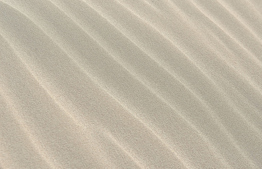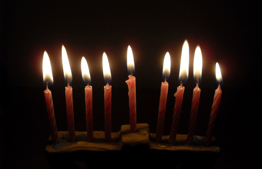Parashat Chayei Sara: The Patriarch Who Never Left Israel

About Yitzchak Avinu, the only patriarch who never left the Land of Israel, and the connection to the Beraita that says that a gentile who sells fruit and claims they are halachically forbidden. Is Azeka mentioned there a city in the Judean Plains or a moniker for a guarded orchard?
"רק את בני לא תשיב שמה" "… but do not take my son back there." (Bereishit 24:8)
Yitzchak: An Unblemished Olah Sacrifice
Our only patriarch who was born in the Land of Israel, never to leave, was Yitzchak. In this week's parasha, we find Avraham warning his servant (Eliezer, according to the midrash) not to take Yitzchak out of the Land of Israel in order to marry (and marriage is one of the reasons for which it is permissible to go abroad). In next week’s parasha, we find G-d warning Yitzchak to stay in Gerar and not travel to Egypt, despite the famine. Pursuit of a livelihood is another such case for which one is allowed to leave the Land of Israel. We see this only regarding Yitzchak. Avraham was born abroad, where he lived the first 75 years of his life. Even after arriving at the Land of Israel, he went down to Egypt because of the famine. While Yaakov was born in the Land of Israel, he had to flee abroad to escape the wrath of his brother Eisav. After he eventually returned, he later went down to Egypt, where he lived the final years of his life and even passed away there (but was buried in Ma’arat Hamachpeila). We see here a pattern: the first patriarch was born abroad, the last patriarch died abroad, while the middle patriarch lived his entire life in the Land of Israel.
These unique guidelines that applied only to Yitzchak are explained by our Sages by the fact that he was an offering sanctified by his father Avraham at the Akeida. “Just as if an olah sacrifice is disqualified if it leaves the Temple enclosure, the same is true with you: if you leave the Land of Israel, you will be disqualified (Bereishit Raba 64:3). However, it seems that the fact that Yitzchak became this "unblemished sacrifice" is the result of his unique role that he was to fill as the nation's middle patriarch.
Midat HaDin: the Trait of Strict Justice and Yitzchak Avinu
The trait of Yitzchak Avinu was that of din, strict justice, related to the trait of gevura, inner strength. The standard of strict justice examines everything vis-à-vis if it serves the ultimate goal, and if not, it has no reason to exist, and is destroyed. This exacting standard does not give any second changes to rectify the situation, in the spirit of "loving the creations and drawing them close to the Torah," the trait of lovingkindness of Avraham Avinu. Strict justice knows no tolerance nor does it give the benefit of the doubt. It asks only one question: is this action completely genuine?
G-d created the world with the standard of strict justice, our Sages teach us. However, He saw the world would not be able to live up to that standard, which is why He mixed in the trait of mercy, midat harachamim. G-d did not substitute justice with mercy, rather added mercy into the equation. The standard of justice is vital; otherwise the world would tolerate evil to the point where evil would destroy all goodness, G-d forbid, ultimately leading to the world's total destruction. Strict justice helps us remember the true goal in life and keep us on track.
It is not for naught that Yitzchak was the middle patriarch. As the middle patriarch, he symbolizes the internal, concealed aspect of the patriarchs and of the Jewish People as a whole. Itzchak Avinu represents the utmost core of the Jewish People, which is often hidden beneath the surface and cannot always be seen by the human eye. Yitzchak shows us that the Jewish People, beneath all of its external layers, pines for its Beloved—to serve Him and call out His name. It is from the strength of Yitzchak Avinu that we all have a bit of the "unblemished sacrifice" in us that is bound up completely with sanctity—that comes from the sacred Land of Israel, which Yitchak never left..
The world we live in is a blend of strict justice and mercy, otherwise it would cease to exist. Our world is not idyllic, and we often get off track, make mistakes, and even sin. This is why it is essential to engage in introspection every so often and do a cheshbon nefesh, a personal reckoning of our actions, employing the standard of strict justice: are our actions completely genuine and correct? Or are they inauthentic and smack of falsehood? For a few minutes every day, we need to be Yitzchak. During this time, we examine the inner, genuine aspect of our actions and ask ourselves if they contribute to our ultimate goal as Jews and as part of the Jewish People: serving G-d and calling out in His Name. This standard of strict justice will inform us that there are certain actions we have to stop immediately. However, there are also behaviors that require long-term, gradual work to change. It is here that we should mix in the trait of mercy: not to surrender in our struggle with evil, but rather so we can uproot it thoroughly and completely, even if the process takes more time to do so.
Azuka or Azeka?
"A gentile who was selling fruit at the marketplace and said: "These fruits are from the tree's first three years of growth (orlah)"; or "they are from Azeka", or "these are fourth-year produce (neta revay)" – he hasn’t said anything of consequence; he only intends to enhance his goods." (Yevamot 122a).
Guarded Fruit during the Shemita Year
The Rishonim grappled to understanding the beraita and identify the "Azeka" mentioned there. Even Rashi himself, who does not generally engage in a give-and-take in his commentary, deviates from his customary approach.
The principle this beraita is addressing is when non-Jews sell their wares, and among his words advertising his goods, he in essence states that his merchandise is forbidden for Jews to purchase. For instance, if the vendor says that his fruits are orlah, it is forbidden to even derive benefit from them. However, in practice we do not take his claims into consideration as substantial testimony, since the non-Jew considers orlah as praise—saying that his fruit is of a higher quality (note: according to what we know today this is not accurate; trees in their orlah years produce inferior fruit to mature trees). For this reason, we do not take the non-Jewish vendor's claims into consideration, and we follow the majority; if the majority is permissible (according to the ratio of majority to minority as it applies to each case; for instance: orlah and kilei hakerem require a 1:200 ratio, while teruma 1:100), the produce is permissible.
The Azeka mentioned here does not necessarily mean a place, but rather a means of cultivation "מפרדס מעוזק וגדר סביב לו לשומרו" "from a locked orchard surrounded by a fence to guard it." Should this be the intention of the beraita, this would be a shemita year, and the halachic problem is that the fruit, which are supposed to be left ownerless, are guarded. This is the first interpretation Rashi offers, but he finds difficulty with it, since guarded fruit are nevertheless permitted to eat.
For this reason, Rashi concludes that Azeka is a geographical location. The case at hand, then, is when a non-Jew sells fruit outside of Israel and tells his would-be buyers that he brought them from the city Azeka in the Land of Israel, whose fruits are famous for their excellent quality. The question here, then, is: do we believe him and then separate terumot and ma'aserot from the fruit? The halacha in this case is that we discount what he says, since the non-Jewish vendor's goal is to best advertise his wares. The halachic principle that the baraita wants to teach us is the same in both instances is the same, but it raises a significant discussion about whether or not guarded shemita produce is forbidden to eat. Rashi clearly holds that such fruit is permissible for consumption, as does the Ramban (while our Sages prohibit purchasing fruit from orchard owners who guard their fruit, the actual fruits are still permissible to eat). It seems that this is also Rambam's opinion. Rabeinu Tam, however, holds (based on the Sifra) that guarded fruit is prohibited; subsequently, Rashi's first interpretation, in his opinion, would be the correct one.
Tel Azeka
Azeka was an ancient city in the Judean Plains, located at the Tel bearing its name and located on the grounds of Britannia Park (named after British Jewry, which contributed to its establishment), under the auspices of KKL-JNF. The city is first mentioned in Yehoshua as the place where the kings of the South fled when fighting Yehoshua. Later on, it is listed as one of the cities in the portion of the tribe of Yehuda. During the Judean kingship period Azeka was a fortress, understandable as it is a hill overlooking an important road leading from the Judean mountains to the coast. An ancient Assyrian document likens Azeka to "an eagle's nest." Indeed, in excavations performed in the late 19th century by Frederick J. Bliss and R.A. Stewart Macalister of the British Palestine Exploration Fund (the PEF), remnants of a wall and towers were revealed dating back to the First Temple. The fact that Azeka was such a stronghold, as was the neighboring Lachish (situated southwards), contributed to the fact that these two Judean cities were among the last to be captured by Nebuchadnezzar, king of Babylon.
Remnants discovered in the area of the Tel indicate that Akeza was resettled by Jews returning from the Babylonian exile. Even following the destruction of the Second Temple, during the Bar Kochba Revolt, Jews lived in Azeka and a system of hideout caves were discovered onsite. This is apparently the Azeka Rashi is referring to in his second interpretation, assuming that the Biblical name was preserved during his time. The Modoba map from the Byzantine era notes a settlement Beth Zecharia with a church; Moshav Zecharia (referred also as Zakariya, is Jewishly inhabited today), situated nearby, bears its name today.
Visitors of the Tel will encounter another famous and important story from Jewish history that took place not at the Tel but nearby. This event is none other than the showdown between David and Goliath, which took place between Sokhoh and Azeka. On the way leading up to the Tel and at its summit are boulders bearing the verses from Samuel related to this Biblical story. It is interesting to note that the foot of the Tel is called in Arabic al-Hamra, "the red." While this could be related to the color of the earth, it could also have to do with the interpretation of R' Yochanan in the Jerusalem Talmud (Sanhedrin 2d), who renders the place efes damim mentioned in the story of David and Goliath as chekel sumkata, that is, "the red field." This area can be seen clearly from the breathtaking observation point at the Tel's summit.




